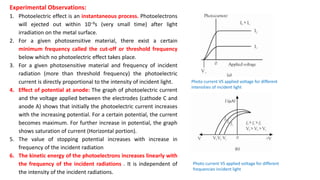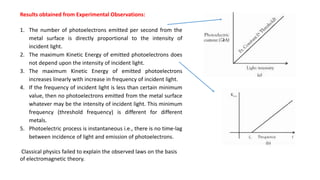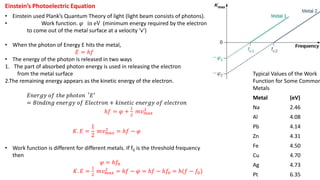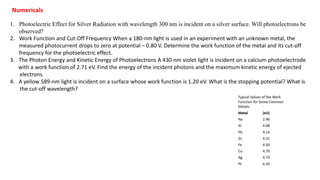This document discusses the photoelectric effect and its explanation using Einstein's photon model of light. It defines the photoelectric effect, experimental setup, observations and results. It describes how photons eject electrons from metal surfaces, with kinetic energy determined by photon energy minus the metal's work function. It also discusses threshold frequency, work function, cut-off wavelength and frequency, and provides numerical examples to calculate these values.




















